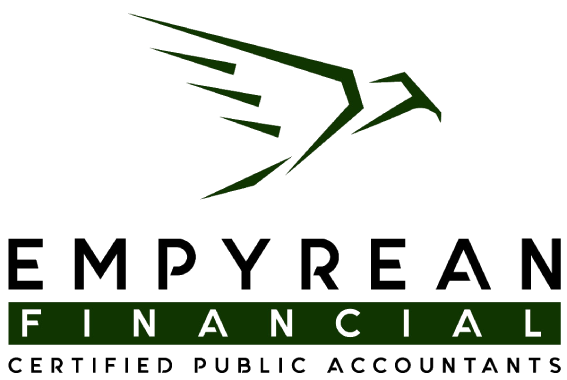As we reach the midpoint of 2025, it’s the perfect time to step back and assess your financial landscape. A mid-year tax review helps you avoid surprises next April, optimize your current strategies, and potentially lower your overall tax bill. Whether you’re a salaried employee, freelancer, small business owner, or high-net-worth individual, these smart mid-year tax moves can improve your financial health.

1. Review Your Income and Estimated Tax Payments
Start with a simple check-in: how much income have you earned so far in 2025, and how much tax have you paid? This is especially important if you’ve had any major changes—like switching jobs, getting a raise, or starting a side hustle.
- Salaried employees should compare year-to-date withholdings to their expected full-year tax liability.
- Freelancers and business owners need to ensure their quarterly estimated tax payments are accurate to avoid penalties.
Adjust now if needed. It’s easier to increase payments in the second half of the year than to scramble in April.
2. Adjust Your W-4 Withholding
If you’re a W-2 employee and your tax situation has changed—new dependents, second job, marriage, etc.—use the IRS Tax Withholding Estimator to see if you should update your W-4. Submitting a revised W-4 to your employer can help spread out your withholding over the rest of the year, preventing underpayment or overpayment.
3. Max Out Retirement Contributions
Retirement accounts offer valuable tax benefits, so mid-year is a good time to check how much you’ve contributed and whether you can increase it.
- 401(k) & 403(b): Contribution limit for 2025 is $23,500 (plus an extra $7,500 if you’re 50+).
- Traditional or Roth IRA: Limit is $7,000 ($8,000 if you’re 50+).
- SEP IRAs or Solo 401(k)s for the self-employed can allow contributions up to $70,000, depending on income.
Increasing your contributions now can reduce your 2025 taxable income and help you take full advantage of catch-up contributions if eligible.
4. Check HSA and FSA Contributions
If you have a Health Savings Account (HSA) with a high-deductible plan, you can contribute up to:
- $4,300 (individual)
- $8,550 (family)
- Plus $1,000 if you’re 55+
HSA contributions are tax-deductible, grow tax-free, and withdrawals for qualified medical expenses are also tax-free—triple tax benefit.
Flexible Spending Accounts (FSAs) are use-it-or-lose-it. Check your balance and spend accordingly on eligible healthcare or dependent care expenses to avoid losing unspent funds at year-end.
5. Smart Charitable Giving
If you give to charity, think strategically:
- Bunch donations into one year to exceed the standard deduction and itemize.
- Donor-Advised Funds (DAFs) let you make one large donation now and distribute to charities later.
- Donate appreciated assets like stock to avoid capital gains tax and still claim the full value as a charitable deduction.
High-net-worth individuals over age 70½ can use Qualified Charitable Distributions (QCDs) from IRAs, reducing required minimum distributions (RMDs) and taxable income.
6. Harvest Investment Losses
Markets fluctuate, and if you have investments in a taxable brokerage account trading below your cost basis, consider tax-loss harvesting. Sell underperforming assets to offset capital gains from other investments.
- Up to $3,000 of net capital losses can offset ordinary income annually.
- Be sure to avoid the wash-sale rule by not repurchasing substantially identical securities within 30 days.
This strategy can lower your 2025 tax bill and improve long-term portfolio tax efficiency.
7. Plan Business Deductions (Freelancers & Business Owners)
Mid-year is crucial for entrepreneurs and freelancers to review and plan:
- Track expenses: Home office, software, supplies, travel, and vehicle usage may be deductible.
- Time major purchases: Equipment bought and placed in service before year-end may qualify for Section 179 or bonus depreciation.
- Set up or fund a retirement plan: SEP IRAs, SIMPLE IRAs, or Solo 401(k)s reduce taxable income and increase retirement savings.
- Consider hiring decisions or benefit programs that might qualify for tax credits.
Organizing your books now makes year-end easier and helps uncover overlooked deductions.
8. Review Tax Credit Eligibility
Tax credits reduce your tax liability dollar for dollar—don’t leave them on the table. Evaluate your eligibility for:
- Child Tax Credit: Up to $2,000 per child under 17.
- Child and Dependent Care Credit: Worth up to $2,100 for two or more dependents in daycare or after-school care.
Education Credits:
- American Opportunity Credit: Up to $2,500 per student.
- Lifetime Learning Credit: Up to $2,000 per return for tuition or job skills training.
- Saver’s Credit: For lower to moderate incomes contributing to retirement accounts.
Energy Tax Credits:
- Home Improvements: Up to $3,200 for heat pumps, insulation, etc.
- Clean Energy (Solar, Batteries): 30% of cost with no dollar cap.
- Electric Vehicles: Up to $7,500 for new, $4,000 for used EVs (income limits apply).
Double-check eligibility, phaseout thresholds, and recordkeeping requirements now so you’re prepared.
Final Thoughts: Act Now for a Stronger Finish
The second half of the year is a golden opportunity to take control of your tax situation. Mid-year moves like adjusting withholdings, maximizing deductions, and planning for credits can lead to:
- Reduced tax liability
- Avoidance of penalties
- Improved cash flow
- Better financial outcomes
Don’t wait until December or tax season to act. Take an hour now to run the numbers, review your strategies, and consult a tax advisor or financial planner. A few smart decisions today can make a big difference in your financial health tomorrow.







